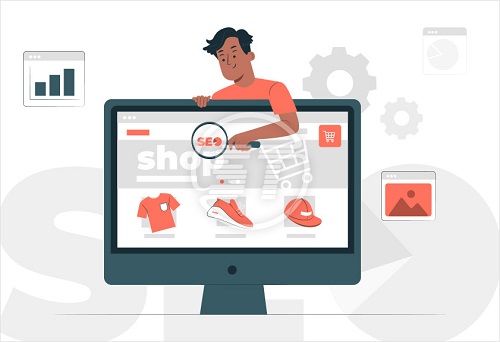


Boost your e-commerce sales with proven product page SEO tips. Learn how to optimize titles, images, schema, speed & more.
In the fast-paced world of e-commerce, simply having a great product isn’t enough. Your online store needs visibility, and for that, search engine optimization (SEO) is critical—especially on product pages. These pages are often the last stop before a customer decides to make a purchase. Yet, they’re frequently overlooked when it comes to SEO strategy. By following proven SEO best practices, e-commerce businesses can improve product page rankings, drive qualified traffic, and increase conversions.
1. Optimize Product Titles with Relevant Keywords
Product titles are one of the first things search engines crawl, and they play a significant role in rankings. Use relevant, descriptive keywords that reflect what users are actually searching for.
For example, instead of naming a product “Air 2000,” use a more SEO-friendly title like “Air 2000 Wireless Bluetooth Headphones – Noise Cancelling.” This provides clarity to both users and search engines.
Avoid the temptation to copy and paste manufacturer descriptions. Duplicate content can hurt your rankings and reduce the uniqueness of your site. Each product should have its own original description that includes relevant keywords, highlights benefits, and solves customer pain points.
Use bullet points for key features but also add a paragraph or two of compelling copy. Think like a customer—what would convince them to buy? Well-written descriptions not only improve SEO but also build trust and engagement.
E-commerce is visual, but search engines can’t “see” images. That’s why alt text is so important. Proper image optimization helps your products appear in Google Images and enhances accessibility for users with visual impairments.
Include descriptive keywords in the alt text, but keep it concise and relevant. For instance, use “black leather women’s crossbody bag” instead of just “bag.jpg.”
Also, compress your images to ensure fast loading speeds—a critical factor for both SEO and user experience.
Schema markup adds context to your content, allowing search engines to display rich results like star ratings, pricing, and stock information. This makes your listings more attractive in search results and can improve click-through rates (CTR).
Implementing structured data may sound technical, but many platforms like Shopify and WooCommerce offer plugins or apps to simplify the process. Or you can consult an experienced SEO agency in Dubai to handle it seamlessly.
Slow product pages lead to high bounce rates and lost sales. Page speed is also a confirmed ranking factor in Google’s algorithm.
Tools like Google PageSpeed Insights and GTmetrix can help identify what’s slowing your site down and how to fix it.
User-generated content such as product reviews not only builds credibility but also adds fresh, keyword-rich content to your pages.
Search engines favor updated content, and customer reviews are a great way to naturally boost relevancy and keyword variety. They can also contribute to rich snippets when properly marked up with schema.
Encourage customers to leave reviews post-purchase, and display them prominently on the product page. This social proof can also improve conversion rates significantly.
If you have similar product pages (e.g., same product in different colors or sizes), search engines may view them as duplicate content. This can dilute your ranking potential.
To solve this, use canonical tags to tell Google which version of the page is the “main” one. This helps consolidate authority and avoids penalization for duplicate content.
For more complex setups, particularly in large catalogs, an SEO agency can help you implement advanced strategies for managing duplicate and thin content.
Internal linking improves crawlability and helps distribute authority across your site. On product pages, include links to:
This improves user navigation and increases the time spent on your site, which can positively influence rankings. Make sure anchor text is descriptive and relevant, not generic like “click here.”
With mobile-first indexing in place, Google prioritizes the mobile version of your site. Your product pages must be fully responsive and meet Core Web Vitals performance standards.
Most users shop via mobile, so optimizing the product page experience for smaller screens isn’t optional—it’s essential. A qualified SEO agency in Abu Dhabi can audit your site’s mobile performance and make necessary adjustments.
